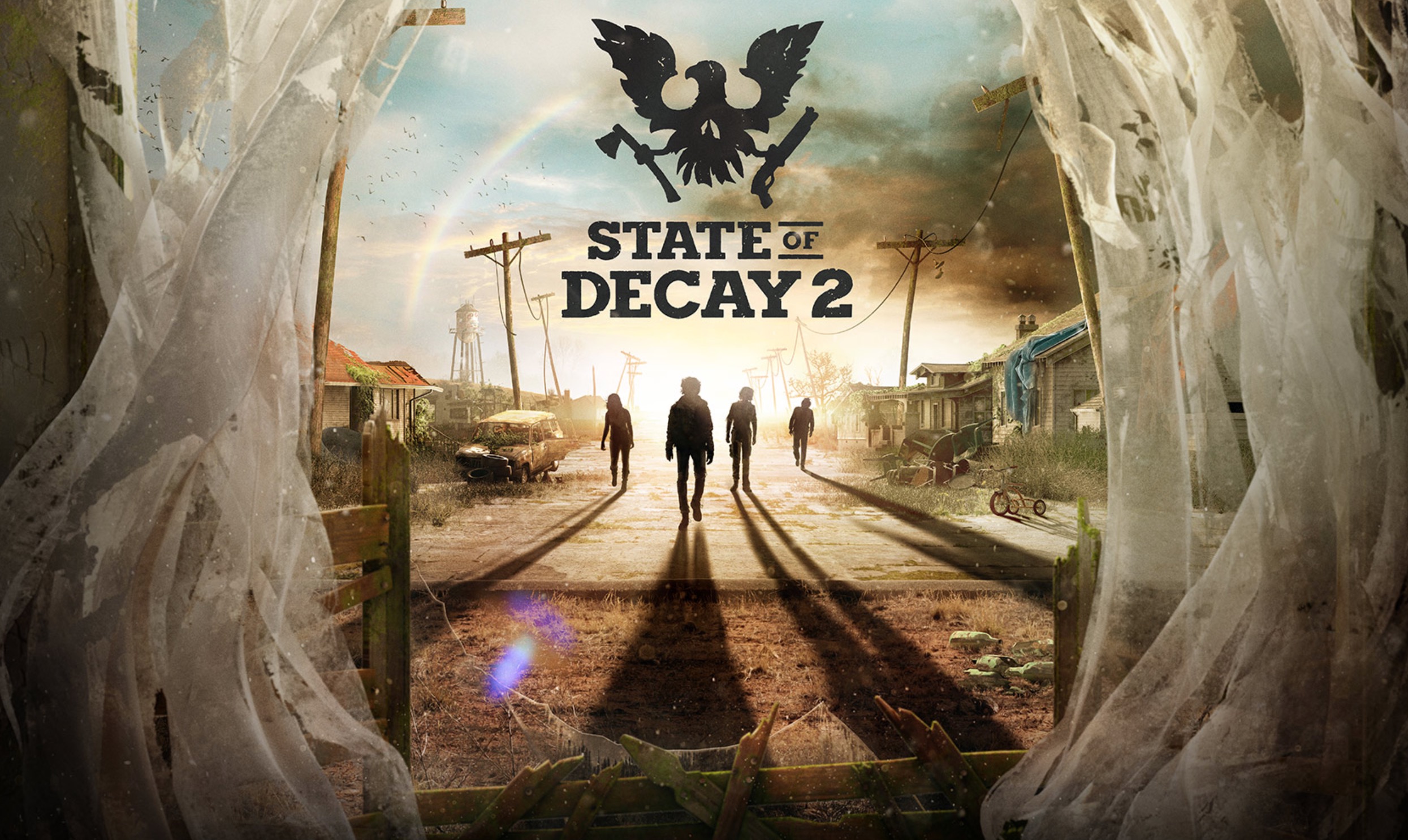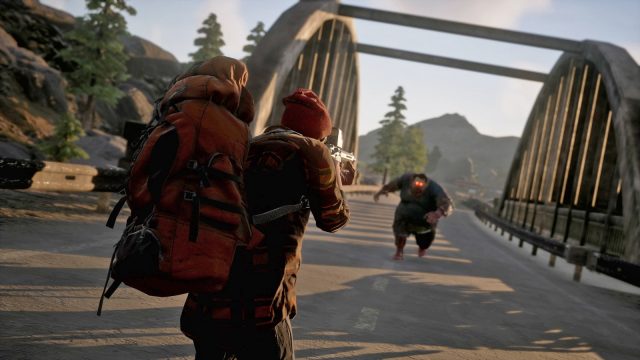
Face it: We’re infatuated with the idea of a zombie apocalypse, even if it’s not the most realistic thing to expect. Books, graphic novels and movies based around the idea continue to be of interest to many, and both The Walking Dead and its spinoff, Fear The Walking Dead, dominate many folks’ screen time despite lessening quality and a general lack of creativity within the main series. Still, video games may well be where this zombie addiction is felt most, and that’s not a new thing. Reanimated corpses have been one of our hobby’s favourite enemies for quite some time, and it’s really come to a head in recent years with games like Left 4 Dead, Dead Rising, State of Decay and Call of Duty‘s very popular Zombies modes.
Needless to say, it doesn’t seem like this obsession is going to go away anytime soon, and that’s fine by me. I love shooting, hitting and using everyday objects to fight, kill and behead the bastards. It’s almost always good fun.
The latest combatant to enter the world of interactive zombie apocalypses is State of Decay 2, the follow-up to 2013’s surprise hit Xbox Live Arcade game from Seattle’s Undead Labs. It will soon be available in early access, and will then release in full next week, on both the Xbox One and Windows PC platforms, not to mention through Microsoft’s Game Pass subscription service.
Set some time after the events of its predecessor, State of Decay 2 continues its series’ digital undead uprising in some semblance of a realistic fashion. At the beginning of the game, players are asked to choose from one of several pairs of pre-crafted survivors, all of whom have their own unique skills and made up back stories. Then, they’re dropped into an interactive tutorial that makes it feel as if there’s an actual storyline with main characters that it was written around, when that really isn’t the case. After all, State of Decay 2 is about just one thing and that’s survival. It may originally make you feel like the characters you’ve chosen (all of whom are either friends, siblings, lovers or former lovers) were designed to be its stars, but that’s not exactly true. They’re just who you start off as, and act as the introduction to the game’s world, where you’ll quickly encounter danger and be rescued by a helpful armed forces member and a doctor who somehow knows how to cure the zombies’ blood plague.
Things begin in a walled off camp, as your two chosen heroes reach the presumed safety of their arduous quest’s destination. However, as is usually the case in such narratives, what they hoped for is not reality. The camp has been deserted, save for a couple of people and a few shambling corpses, and though it has a few supplies to offer it is not a good place to hunker down. This fact is hammered home when, while exploring, the character you are not in control of is bitten by a plague filled walker. At first it’s brushed off, but doom and gloom quickly sets it once the pair realize that this wasn’t just some ordinary bite, and that medical treatment is required. Thankfully, they come across friendly faces, who help them escape and set up a new residence in one of three available towns that are roughly the size of the first game’s world.
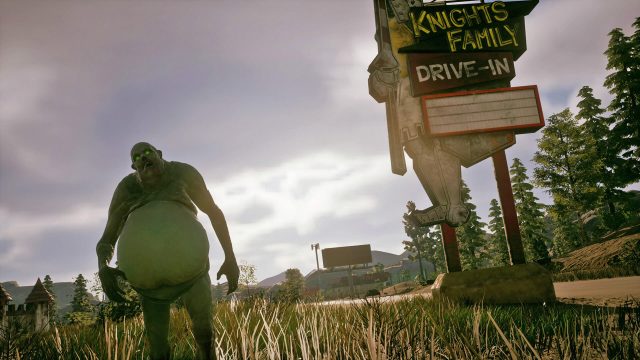
Your original goal is to find a sample of plague zombie bacteria, so that the doctor can create a cure for your ailing friend. That’s easier said than done, though, and looking after someone also requires resources, as well as a makeshift infirmary. Thus, you must venture out into the areas surrounding your newly assumed home, scavenging every home, building, locker, chest and store in sight. What makes this more precarious than it normally would be is, of course, the zombies, who come in varying types now. There are the regular shamblers you’d expect to see, and they’re complemented by more challenging types such as armored zombies, fat zombie tanks and screamers who stun you while alerting their kin. Those as well as the aforementioned plague zombies, whose eyes glow and whose abilities are much greater than their standard peers.
Of course, the main goal of State of Decay 2 isn’t to just save your friend. Like those who came before them, your assumed character is attempting to begin a new life in a different location, where he or she will have to work with strangers to set up, run and protect a brand new community. Whether you choose the valley, foothills or plateau map, it’s the same objective, just in different locations.
At the start, it’ll just be the four of you, and you’ll be able to cycle between everyone. If one survivor gets tired, becomes injured or comes down with the blood plague, another can take over. Certain missions also require specific characters, and switching to another one can cancel said quest. It is, however, possible to ask one of these randomly generated protagonists to accompany you on your journeys into the zombie-filled wilds, but you’re not always able to assume control of both of them. Most of the time, though, that is a possibility. It’s also an important thing to take advantage of, because backpacks and pockets can only provide so many storage spots, which fill up rather quickly. Two people means that there’s potentially double the storage to be used. Furthermore, there are also large packages that each survivor can only carry one of at a time, which makes buddying up even more important.
Expect to be doing a lot of searching for goods, weapons and supplies, too. Much of the game is based around the idea that one must manage his or her community and take care of everything it needs. This means finding and keeping as much food, medicine, scrap, weapons and seeds on hand as possible. Not only does healing an injured or sick survivor take a lot of resources, but building new additions to your homestead (such as an infirmary, a garden, a work bench, a guard tower or something similar) does as well.
As you make your way through your chosen map, you’ll not only come across varying zombies, but survivors as well. Some are friendly, and will radio you to ask for help, but others can be downright evil, making it so that the only way to make peace with them is through the use of a bullet, an improvised explosive or some sort of melee weapon. Or perhaps a combination of all three.
If a stranger or a group of strangers asks for your help, benefits will come from going to their aid. They may share something with you or want to trade, for starters, and that will help you gain or spend the influence that acts as State of Decay 2‘s currency. Becoming friendly with these randomized people can also lead to them joining your ranks, bringing with them the skills that allowed them to survive for so long in the first place. Character skills vary, and they can be improved upon through progression, getting to the point where you can select specializations that act as perks and unlock achievements.
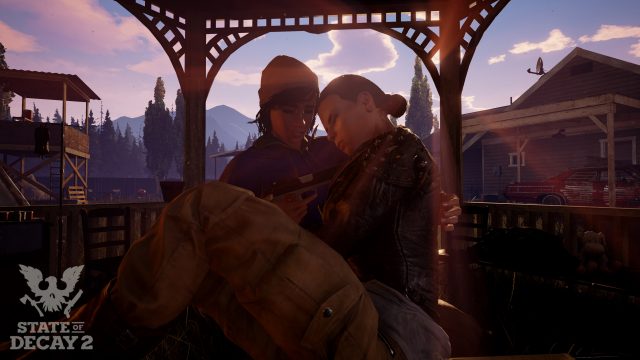
As mentioned, the beginning of the game prompts players to choose between pairs of presumed heroes. Well, each one has his or her own unique stats, which are ranked through categories like stamina, combat, shooting, computer skills, gardening skills, medicine and crafting. Having a good mix of these specifications will benefit any community, and making sure to both use and hone each survivor’s abilities is quite important.
This doesn’t mean that these people won’t end up annoying you, because it’s difficult to keep everyone happy and morale can easily slip. Some will whine about wanting to leave, and may end up doing so, while others will ask you to do quests for them or want to go on their own. Managing these relationships can take time and can also become a grind that may be off-putting to some.
After some time has passed, things have calmed down a bit and people have leveled up, the player will then be asked to choose the Rick Grimes of their community. That is, the digitally created person who will act as their absolute leader, and whose specialization (be it sheriff or doctor or what have you) is most important. This is just part of the social process that powers State of Decay 2 and propels you out into the wilds to collect and stock resources.
That said, there’s more to this game than what’s written above. In fact, as you’ll discover early on, there are other tasks and issues that must be taken care of.
As you explore, scavenge and use binoculars or gun sights to scour each map, you’ll discover or hear about the locations of both zombie infestations and plague hearts. It’s the latter one that is most important, because it’s a way in which you’ll progress through the ‘campaign’ and get closer to becoming a successful survivor. Plague hearts, you see, are responsible for the blood plague that has consumed a good amount of the local zombie population. Since it can be spread to humans, it’s important that you wipe out these hearts and get rid of the plague for good, else you’ll be spending lots of time and resources producing cures for sick community members. This is easier said than done, of course, because the plague hearts are relatively strong and happen to be well protected. Thus, taking a friend (be it an AI companion or up to three real-life pals) is important, as is making sure to bring a good amount of explosives.
The combat mechanics that help you withstand these and other situations like them are unfortunately one of the weaker points of State of Decay 2, as they were in the first game. The shooting mechanics are quite simple and accessible, and also work well, but most of the time combat is handled through basic, melee means. Thus, one can expect to make good use of the X button, while having to repeatedly tap it to swing a machete, a crowbar or something of that ilk. There aren’t many special moves or abilities, either, outside of a visceral stealth kill mechanic and the ability to quickly silence downed zombies.
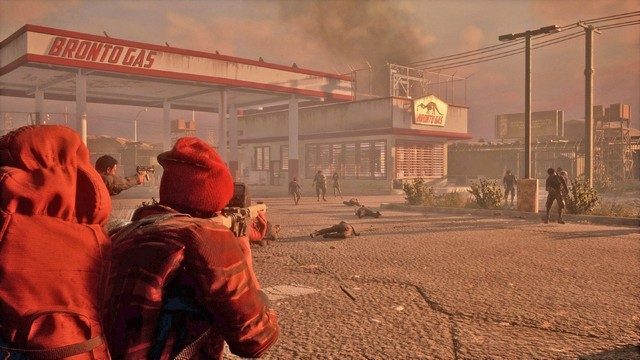
Throwing explosives can also be pretty cumbersome, and though it told me that I could throw them while aiming, that proved to be cumbersome. Another way to use these is to open the menu, select them and then press use, but it can be hard to avoid collateral damage while doing so.
State of Decay 2 is definitely an improvement upon its pretty solid predecessor, though, and this is made evident by some of the aforementioned enhancements, not to mention its attention to detail. For example, gas now matters, meaning that you must carry cans and fill up (and even sometimes repair) vehicles you find along the way.
Adding co-operative play into the fold was also a smart move, even if it’s not my personal cup of tea. As someone who’s always preferred single player titles and likes to go about things alone, I didn’t care much for having another person (or three) enter my game, even if it meant that I’d get more help against the undead. This will allow people who love to play games with friends the opportunity to do so in a series that never allowed such a thing before. It’s also nice that there’s a radio you can use to call for help, or call other NPCs to find out about the locations of things like medical supplies.
Another good facet of this game is that, upon surviving its challenging and rather unforgiving ordeal with one community, you can import some of your favourite heroes into your next one. The tutorial is also skippable, which is nice. However, as was the case before, once a survivor is killed he or she is gone for good and failure is always a possibility because of this.
That said, the State of Decay 2 experience isn’t a seamless one, as much like that which came before it there are bugs and performance problems to be found. Although we reviewed this thing using an Xbox One X, we weren’t able to avoid slowdown, texture pop in and other random issues. For instance, one of my characters got stuck in the air between a counter and the front desk of a car dealership, and couldn’t move. Thankfully things are saved regularly, without player interference being required, so I didn’t lose anything by restarting. Later on, I also noticed that there’s an option (via the radio) to go back a few steps if you do end up getting stuck, which is something that shouldn’t really be necessary.
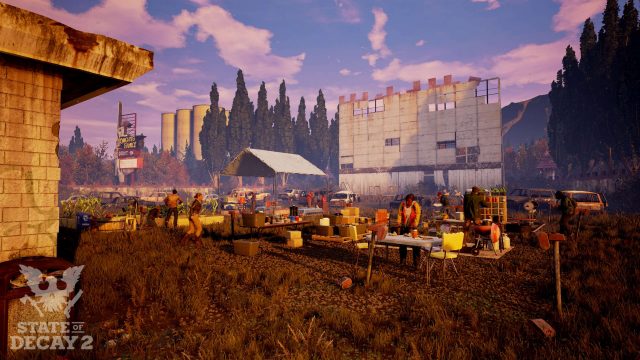
Voice acting is another problematic area, because the survivors emote poorly and are full of wooden personalities. They’ll bitch and moan and try to exclaim things, but it comes out as if the actors didn’t really care. Although this is likely the result of the whole randomly generated characters approach, it’s still a downside because it makes it difficult to identity with or care about these people.
Outside of the above, this is a decent looking and sounding game, albeit one that feels slightly dated in terms of what’s under the hood. It’s all more than enough, though, and would’ve been fine if it weren’t for the performance problems that also factor in.
At the end of the day, State of Decay 2 is a very solid survival experience, and one that I ended up enjoying more than I’d expected to. It is rough around the edges, though, which is a shame because most of the same issues existed within its predecessor. That said, this is merely a $29.99 USD budget title, which makes it easier to overlook its faults and deficiencies, especially when the core gameplay tends to be quite fun and addictive.
**This review is based on the Xbox One version of the game, which we were provided with.**

